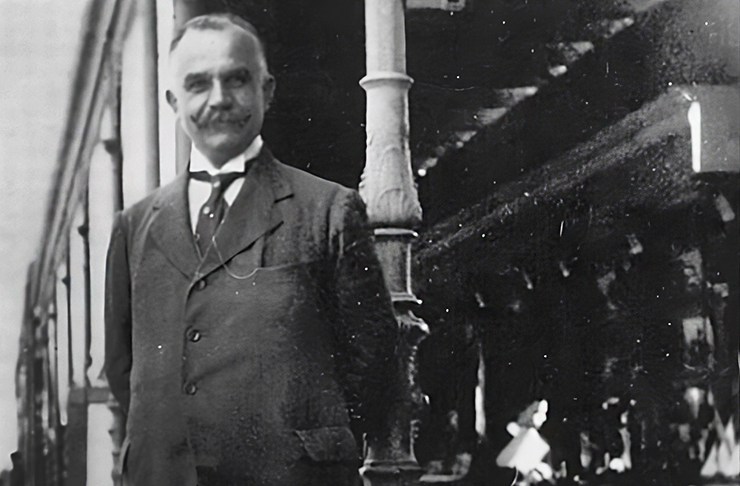Sotirios Voulgaris (1857 – 1932), the founder of the luxury brand “Bulgari”, was a Greek silversmith whose vision and craftsmanship laid the foundation for one of the most iconic names in the world of fashion and jewelry. Born in 1857 in the village of Kalarites, Epirus, Greece, Voulgaris hailed from a family of silversmiths, a tradition that greatly influenced his early life and career.

Voulgaris’ journey into the world of luxury began in his homeland, where he mastered the art of working with silver. However, his ambitions were not confined to the small village where he was born. In 1880, at the age of 23, he left Greece in search of broader opportunities, eventually settling in Corfu and then Naples, Italy. His journey finally led him to Rome in 1884, where he opened his first store in Via Sistina, a modest shop specializing in fine silverware and antique jewelry.

The brand that would later become “Bulgari” began to take shape as Voulgaris honed his craft and established a reputation for exceptional quality and unique designs. His work was deeply influenced by his Greek heritage, particularly the classical art and architecture of ancient Greece, which is evident in the intricate details and symmetry of his designs. Voulgaris’ pieces were characterized by boldness and elegance, often incorporating vibrant gemstones and innovative techniques that set them apart from traditional Italian jewelry.

By the early 20th century, Voulgaris’ reputation had grown, and his business expanded to accommodate a more diverse clientele. The store moved to the prestigious Via Condotti in Rome, where it remains to this day as Bulgari’s flagship location. It was here that Voulgaris’ brand truly flourished, attracting the attention of the European elite and even royalty. His creations became synonymous with luxury, and the “Bulgari” name began to establish itself as a symbol of opulence and sophistication.

A key aspect of the brand’s identity is the stylized spelling of its name as “Bvlgari”, where its logo uses a “V” instead of the “U,” a choice inspired by the classical Latin alphabet, where the letter “V” was often used to represent “U.” This stylistic decision reflects the brand’s deep connection to ancient Roman culture and its commitment to timeless elegance. The use of “Bvlgari” in the logo adds an air of heritage and prestige, reinforcing the brand’s roots in classical antiquity while also standing out in the modern luxury market.

Voulgaris passed away in 1932, but his legacy lived on through his family, who continued to build the “Bulgari” brand into the global powerhouse it is today. His sons, Constantino and Giorgio, took over the business and expanded it further, introducing new collections and solidifying Bulgari’s place in the world of high fashion and jewelry.

Sotirios Voulgaris’ life and work remain a testament to his vision and dedication. From a small village in Greece to the heart of Rome, his journey is a remarkable story of creativity, entrepreneurship, and the enduring appeal of timeless design. Through “Bulgari”, Voulgaris left an indelible mark on the fashion industry, one that continues to inspire and captivate generations.






